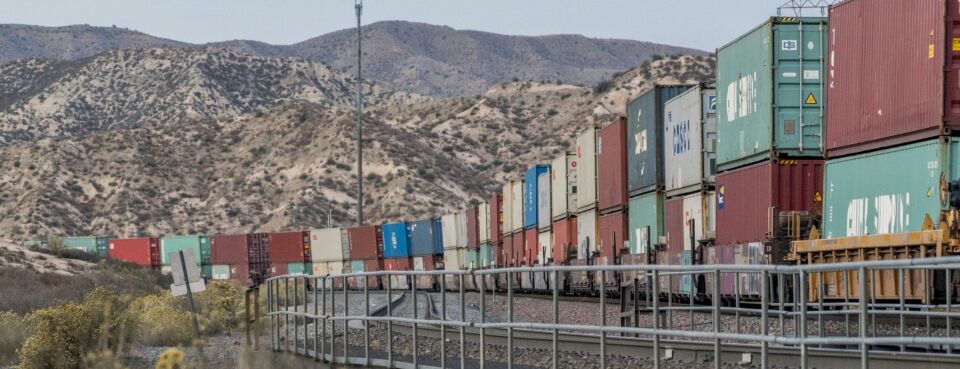
An escalating labor dispute in America’s rail system is drawing attention to an often-overlooked piece of the economy: its role in the national supply chain.
Supply chain struggles have been snarling the economy for months, delaying goods and driving inflation. But for the most part, efforts to relieve the backlog have been focused on seaports and trucking—an oversight freight rail workers want to see fixed.
A Biden-appointed board last week issued a set of recommendations to resolve the dispute, but there’s no telling whether the unions and rail companies will agree. If they don’t, it could lead to a national rail strike of 115,000 workers this fall, ahead of midterm elections.
1. What are workers upset about?
Railroad workers’ complaints are similar to those of other employees who have threatened to walk out in the wake of the pandemic: They’re overworked, understaffed, and underpaid, and they’ve been operating without a contract for more than two years.
The tension started long before Covid-19, when major railroads began rolling out “precision scheduled railroading” plans to boost efficiency. The plans have lots of moving parts, but railroad workers say overall they have resulted in staffing shortages and decreased inspections, making the job more demanding and dangerous.
Large rail carries cut staff by 29% in the last six years, according to the Surface Transportation Board. Railroad employment as a whole has shrunk by more than 20% since 2018—a loss of 40,000 jobs, according to the Bureau of Labor Statistics.
On top of that, strict attendance policies—some of which require employees to work 12 hours a day—made it difficult to attract new workers as the demand for consumer goods came roaring back, said Ron Kaminkow, general secretary of Railroad Workers United.
It’s not uncommon for railroads to run trains with just one worker, a practice unions roundly criticize. The Federal Railroad Administration had explored a two-person minimum requirement, but backed away from the idea in 2019, saying that data “does not establish that one-person operations are less safe than multi-person trains.” The FRA revived the proposal in July, but it’s still under consideration.
2. What does the law say?
In private industries, most of which are governed by the National Labor Relations Act, unions are free to strike with few restrictions. That’s not the case in rail, however, which is governed by the much stricter Railway Labor Act of 1926.
Under the RLA, the National Mediation Board can prevent a union from striking for a period of time through 30-day cooling off blocs that force the parties to, well, chill out to prevent major economic disruption.
The law empowers the president to appoint a special emergency board to mediate a dispute, which Biden did in July.
3. What is a presidential emergency board, and what is it doing?
Biden appointed a three-person presidential emergency board to propose a compromise. The board on Aug. 16 published a set of recommendations calling for wage increases and better health coverage. But the proposal doesn’t offer much in the way of scheduling, attendance, and other issues important to the 12 railroad unions.
Railroad executives responded warmly to the proposal, while most unions haven’t yet commented.
Celeste Drake, Biden’s top labor adviser, told Bloomberg Law that the parties “are already talking, and we are standing by to support that process if needed.” She didn’t say whether Biden would back a rail workers strike if unions don’t reach an agreement.
4. How will this end?
Under the RLA, all parties are banned from engaging in work stoppages for 30 days after the PEB report is released. If no deal is reached by then, unions are allowed to strike.
But a strike may not last long. Congress has the power to delay or halt a rail strike altogether—it’s been done before, and Democrats may be especially inclined to avoid an economic disaster before the midterm elections.
In 1986, lawmakers extended the no-strike rule for 60 days to continue negotiations with the Maine Central Railroad Union.
And in 1991, Congress ended a national railroad strike less than 24 hours after it began through a joint resolution. The House vote was 400-5.
Read More
"conflict" - Google News
August 22, 2022 at 04:18PM
https://ift.tt/7IjfupZ
Freight Railway Worker Strife Simmers: Labor Conflict Explained - Bloomberg Law
"conflict" - Google News
https://ift.tt/09VzwOb
https://ift.tt/nzxHtSd
Bagikan Berita Ini














0 Response to "Freight Railway Worker Strife Simmers: Labor Conflict Explained - Bloomberg Law"
Post a Comment